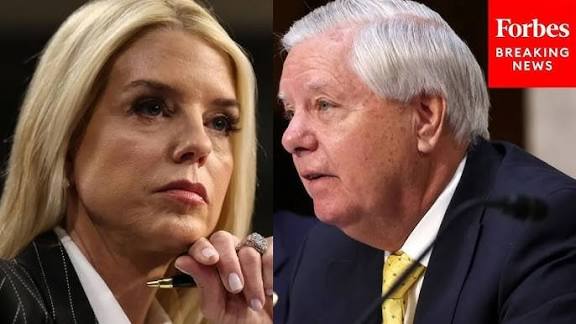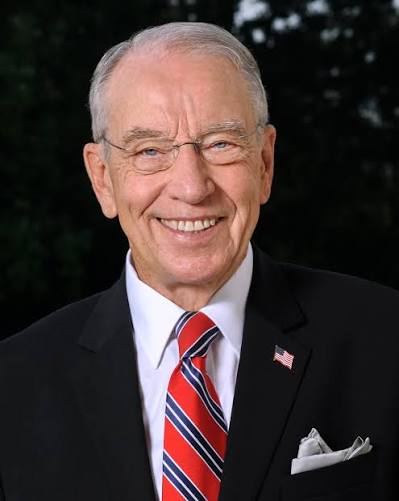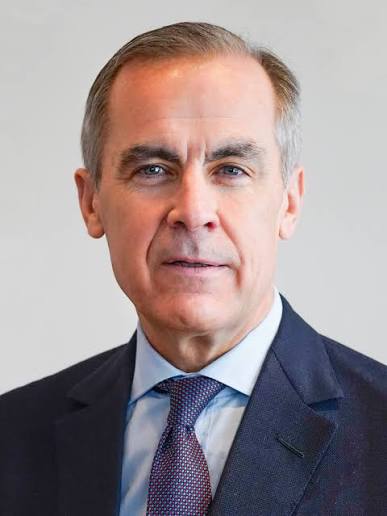Pete Hegseth’s Bold Directives Win Praise: Rebuilding America’s Military,Praise
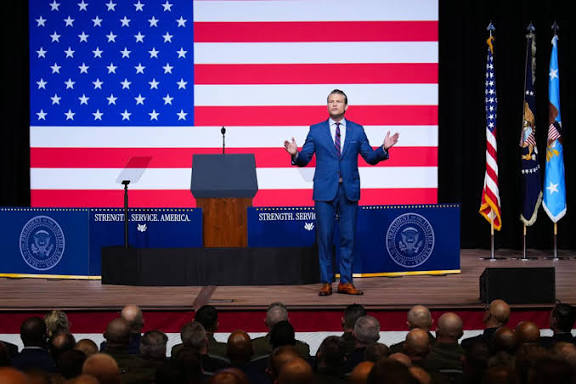
Defense Secretary Pete Hegseth postponed the new name of the war department, “The era of the Defense Department is over.” Today we will discuss about Pete Hegseth’s Bold Directives Win Praise: Rebuilding America’s Military,Praise
Pete Hegseth’s Bold Directives Win Praise: Rebuilding America’s Military,Praise
In recent months, U.S. Defense Secretary Pete Hegseth has launched a sweeping set of reforms intended to overhaul the United States military – aimed at restoring combat readiness, tightening standards, pruning bureaucracy, and shifting ideological priorities. These bold directives have won praise from many quarters for their clarity of purpose, urgency, and willingness to address what proponents see as deep-seated structural decline. Yet they have also provoked concerns from critics who warn of unintended consequences, cultural alienation, and risks to inclusivity.
This article examines Hegseth’s key reforms, the arguments in favor, the criticisms, and what this transformation might mean for the U.S. military’s future.
Who is Pete Hegseth & His Mandate
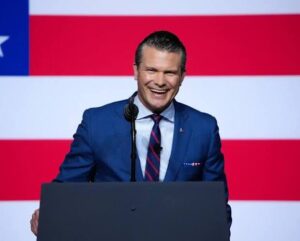
Pete Hegseth is the current U.S. Secretary of Defense, appointed under the Trump administration. His agenda strongly echoes the “America First” doctrine, prioritizing strength, readiness, and deterrence, while pushing back against what he and some supporters describe as “woke culture,” diversity, equity, and inclusion (DEI) initiatives, and perceived bureaucratic excess.
Hegseth has identified three primary pillars for his overhaul:
-
Restoring the Warrior Ethos – emphasizing lethality, meritocracy, high physical and moral standards, discipline, and the importance of mission-first culture.
-
Rebuilding the Military – improving readiness, upgrading technology, reviving the defense industrial base, enhancing procurement processes, and ensuring the military is capable of meeting evolving threats.
-
Reestablishing Deterrence – working with allies, focusing on strategic adversaries (notably China), defending the homeland, and making clear what the U.S. stands for and what it is willing to enforce.
Key Policies & Directives
Here are some of the major initiatives Hegseth has pushed and implemented:
| Policy / Directive | What It Entails | Rationale Given by Hegseth / Supporters |
|---|---|---|
| Refocusing the Defense Budget; Cutting “Excess” | Pulling roughly 8% of current budget (non-lethal programs) to reallocate to core warfighting readiness, technology, training, deterrence capability. | To ensure taxpayer funds are directly supporting warfighting capability and readiness. To eliminate waste, wasteful or redundant spending. |
| Use of DOGE (Department of Government Efficiency) | Incorporating DOGE to find redundancies, fraud, waste, and to eliminate non-core overhead (especially at headquarters / high-level positions). | To redirect agency resources from bloat toward warfighters; to make leadership leaner and more accountable. |
| Audit of the Pentagon / Accountability in Finances | Commitment to performing a full-scale audit, ensuring transparency; aligning spending with operational needs. | To rebuild public trust, ensure military spending is efficient; reduce corruption or inefficiency. |
| Higher Physical and Performance Standards | Enforcing stricter, more demanding fitness, readiness, and physical standards for all roles, particularly combat roles; possibly aligning these around more “male-level” physical benchmarks in certain cases. | To ensure that when soldiers are deployed, they are ready for the rigors of combat; to restore what he sees as degraded standards over time. |
| Rolling Back DEI, “Woke” Initiatives | Disbanding panels (e.g., Advisory Committee on Women in the Services), eliminating diversity-based promotion programs, removing policies or messaging deemed “ideological distractions,” scaling back elements of “identity politics” in military affairs. | To refocus the military on mission, unity, performance rather than identity; to reduce what are viewed as divisive or weakening influences. |
| Leadership Shakeups, Accountability | Replacing or asking resignations of senior officers who are viewed as out-of-step with new priorities; enforcing grooming and appearance standards; requiring senior leadership to be physically fit. |
Praise and Support
Hegseth’s reforms have drawn support from several sources, often for the following reasons:
-
Clarity of Purpose
Many supporters say the U.S. military had become muddled with competing priorities: social justice, environmental concerns, identity politics, and expanding roles that seem peripheral to warfighting. Hegseth’s emphasis on mission, readiness, and lethality is seen as restoring focus. -
Urgent Response to Growing Threats
With strategic competition growing with China, and concerns over Russian adventurism and instability in many parts of the globe, there is a widespread sense among many in defense and policy circles that the U.S. must not fall behind. Upgrades, readiness, and deterrence are more than abstract goals; they are seen as essential for national security. -
Efficiency and Fiscal Responsibility
Cutting waste, redundancies, and misuse of taxpayer dollars is typically popular among both fiscal conservatives and many taxpayers more broadly. Reinvesting saved resources into the core capabilities is attractive. -
Restoration of Morale and Prestige
Some branches of the military and many veterans have expressed concern that morale had declined, that expectations had been lowered, that there was not enough respect for discipline or high standards. Hegseth’s message of discipline, high expectations, and strong leadership is viewed as a potential morale booster by those who feel things had slipped. -
Recruitment Bounce
In his speeches, Hegseth has pointed out that there are signs of a “recruiting renaissance” — that raising the standards and making clear what the mission is might inspire more young Americans to consider military service. Some reports find that service branches are heading toward or exceeding recruitment targets.
Criticisms and Concerns
While the praise is significant, there are also sharp criticisms, and some caution that the reforms could carry risks or unintended negative consequences.
-
Risk to Inclusivity and Diversity
Critics argue that rolling back DEI and similar policies could reduce the diversity of experiences and perspectives in the armed forces. Diversity is often defended, not just on social justice grounds, but on operational ones: diverse forces are argued to be more adaptable, better able to understand different populations, and more innovative. There is concern that emphasizing uniformity might suppress valuable diversity. -
Gender & Physical Standards Issues
Pushing for male-level physical benchmarks, or standards that many view as physically demanding beyond what many women currently meet, has drawn criticism as potentially discriminatory or as placing undue burdens. Opponents say care must be taken to ensure standards are fair, valid, and actually relevant to the roles they intend to guarantee. Also, standards don’t always translate cleanly into job performance, especially in non-combat roles. -
Potential for Alienation and Morale Hit
Some service members who feel targeted or marginalized by the language (e.g. criticisms of “fat generals,” dismissals of DEI programs) may feel alienated. There’s a possibility of loss of experienced personnel who disagree with the administration’s direction, or who feel unfairly treated. Harsh rhetoric can have unintended consequences on retention and internal cohesion. -
Balancing Efficiency with Oversight & Safeguards
Reducing “waste, fraud, abuse” is a worthy goal, but critics often warn that in the name of speed and efficiency, important checks and balances may be weakened. Audits, oversight, whistleblower protections, and due process are all potentially at risk if the drive for efficiency is too heavy-handed. -
Risk of Politicization
Some critics worry that aligning military leadership too closely with ideological or political priorities (whether “America First” or otherwise) may reduce the military’s nonpartisan character, which has traditionally been central to U.S. civil-military relations. For example, asking senior officers to resign if they are uncomfortable with the new agenda could be construed as enforcing ideological conformity. -
Implementation Difficulties
Changing culture, standards, institutions is hard. There are logistical issues: defining what “the warrior ethos” means in practice, designing fair but rigorous physical standards, ensuring adequate funding for modernization programs, dealing with supply chains, industrial base constraints, procurement delays, etc. Critics caution that it’s easy to promise big reforms, but harder to deliver them without cost overruns, resistance, or unintended breakdowns.
Recent Events & High-Profile Examples
A few recent illustrative moments show both how far Hegseth has pushed and how public reactions are forming.
-
A rare meeting of senior military leaders at Quantico, Virginia, where Hegseth announced new military standards including stricter fitness requirements, grooming rules, and the elimination of some race- and gender-based programs.
-
Criticism of what he described as “fat generals and admirals” – in other words, that top leadership should also satisfy fitness and appearance standards.
-
The disbandment of the Defense Advisory Committee on Women in the Services, seen by some as symbolic of a broader rollback of women’s influence and voice in military policy.
These events have further galvanized both supporters and detractors – for supporters as signs that “real change” is happening, for critics as examples of what they see as overly aggressive or ideologically driven moves.
Why Many Consider These Directives Bold & Potentially Impactful
-
Speed & Scope: Many of the policy changes are being introduced rapidly – budget refocusing, leadership changes, standard tightening happen across multiple domains (fitness, budget, ideologies). This is not incremental; it’s systemic.
-
Clarity of Messaging: Hegseth has not shied away from controversial terms like “woke,” “weakness,” “ideological distractions.” That directness is unusual in defense leadership, where public messaging often hedges to avoid controversy.
-
Institutional Leverage: He is using both administrative power (budget allocations, senior personnel changes) and symbolic/policy tools (committees, standards, public speeches). That suggests the reforms are not only rhetorical but intended to reshape structure and morale.
-
Alignment with Broader Political Trends: The reforms fit with the broader Trump-era and conservative political project of reducing DEI, emphasizing national strength, reasserting traditional standards, and reestablishing America’s defense posture. That alignment gives Hegseth backing and political cover. Some supporters see it as fulfilling campaign promises.
Potential Long-Term Outcomes
Here are several possible long-term consequences, contingent on implementation, resistance, and external conditions.
-
Improved Readiness and Combat Capability
If standards are enforced well, procurement is reformed, and budget is used efficiently, the U.S. military could be more capable of rapid deployment, better equipped, and more lethal. This may strengthen deterrence and shift strategic calculations by adversaries. -
Shifts in Recruitment & Retention
The emphasis on high standards might attract individuals seeking clarity, discipline, and purpose. But there’s also a risk of losing or discouraging otherwise capable personnel who feel unable to meet the new physical or ideological expectations, or who disagree with the tone and messaging. -
Redefining Military Culture
Culture changes slowly, but over time, the ethos of what it means to serve could shift. Leadership styles, internal norms, expectations of behavior, dress, appearance, even interpersonal dynamics could be reshaped. Whether this reinforces unity or causes rifts depends on how inclusive, fair, and transparent the shifts are. -
International Implications & Alliances
A leaner, more combat-focused U.S. military might reassure NATO and allies worried about U.S. resolve and commitment. On the other hand, changes that seem ideologically exclusionary or that attract controversy might complicate defense partnerships or raise concerns among allies about values alignment. -
Legal, Ethical, and Institutional Challenges
Rollbacks of DEI programs, changes to promotion criteria, physical standards, etc., will likely face legal challenges, especially if stakeholders believe they violate equal opportunity laws, or if standards are not well validated. Institutions like Congress, the courts, oversight bodies will play big roles. -
Effects on Budget and Industrial Base
Investments in modern systems, while needed, are expensive. Reviving defense industrial capacity, procurement reform, readiness improvements all require sustained funding, possibly high up-front costs. If budget pressures (from domestic spending, debt, etc.) rise, these programs could suffer.
Praises & Who’s Saying What
To give concrete examples of praise and support:
-
Many conservative commentators, think tanks favoring strong national defense, military veterans’ associations have expressed approval, saying these directives are long overdue.
-
Some military families and junior service members have reportedly welcomed the clarity: knowing what is expected, seeing leadership hold to higher standards.
-
Analysts who study military readiness note that after decades of budget constraints, mission creep, and shifting strategic priorities, a refocusing on deterrence and lethality is seen as a corrective by many.
Quotes (paraphrased or direct from sources):
“We will restore our military by matching threats to capabilities … reviving our defense industrial base … reforms acquisition …” — Hegseth laying out what rebuilding means. The Week+1
“Restoring the warrior ethos, rebuilding our military, reestablishing deterrence … this is what our nation needs now.” — another of his repeated formulations. The Week+1
Critique: What to Watch Out For
Balanced evaluation requires considering risks. Some key cautionary points:
-
Standards vs. Role Requirements: Not all military roles require the same physical standard. Combat roles may demand higher physical performance; support roles might require other aptitudes. Over-generalizing standards could both reduce effectiveness and unnecessarily exclude capable individuals.
-
Diversity Not Just for Appearances: Diversity isn’t just a social policy; many argue it’s functionally useful: varied perspectives, cultural competencies, representation with local populations, etc. Discarding diversity programs en masse could reduce the military’s adaptability.
-
Cultural Pushback & Internal Resistance: Organizational inertia, union or senior leadership resistance can slow or alter implementation. If messaging is perceived as punitive or ideological rather than constructive and mission-aligned, it might breed resentment.
-
Legal and Ethical Oversight: U.S. military policies are subject to constitutional, statutory, and international constraints. Changes to promotions, treatment of personnel, non-discrimination law, etc., could face litigation.
-
Strategic Risk of Overemphasis on Physicality: Warfare is increasingly technological, multi-domain (cyber, space, information). Physical readiness is vital, but so are mental, technical, cyber, and intelligence capabilities. Over-emphasizing physicality at the expense of other dimensions could lead to gaps.
-
Budget Trade-offs: Resources are finite. Redirecting funds, cutting non-lethal programs, etc., could leave gaps in areas like infrastructure, soldier welfare, burn-out, education, morale. If non-combat missions or auxiliary roles are underfunded, long-term sustainability might suffer.
Comparisons, Precedents & Historical Parallels
-
Many have compared Hegseth’s push for “warrior ethos” revival to past periods of military reform: e.g. post-Vietnam reforms, the Reagan military buildup, or post-9/11 transformation. Historically, these moments were marked by investment, strong leadership, and cultural shifts.
-
The move to reduce bureaucracy and focus on readiness echoes criticisms that after the end of the Cold War, over time, the U.S. military drifted into lower readiness in some respects, delayed procurement programs, aging equipment, etc.
-
There are also precedents for controversy when changes are seen to affect demographic inclusion or when standards are perceived as exclusionary. The U.S. military has long faced tension between wanting high physical standards and wanting to widen recruitment and participation.
What Would Success Look Like?
To evaluate whether Hegseth’s directives are ultimately effective, several markers could be watched:
-
Measurable Improvement in Readiness Metrics – e.g. deployment times, success in joint exercises, performance in war games, rates of equipment maintenance and readiness.
-
Procurement & Industrial Base Revitalization – fewer delays, better cost control, more domestic production; modernizing critical systems (ships, jets, cyber defenses, etc.).
-
Retention & Recruitment Trends – not just raw numbers, but quality of recruits, reasons they join, satisfaction, retention of experienced personnel.
-
Legal & Institutional Stability – whether reforms hold up in courts, congressional oversight, whether morale remains positive.
-
Deterrence Outcomes – if U.S. adversaries modify behaviour (e.g. reduce provocations), allies express greater confidence, and geopolitical posture shifts in favor of U.S. interests.
Conclusion
Pete Hegseth’s bold directives represent an ambitious project to reshape America’s military. On paper, many of the reforms he has pushed—restoring high physical standards, cutting waste, prioritizing warfighting capability—resonate with long-standing critiques that the U.S. armed forces had drifted from mission-focus toward social and bureaucratic complexity. Supporters see these changes as necessary for dealing with an increasingly dangerous world.
Yet the path ahead is complex. Revamping military culture, standards, recruitment, leadership, and the balance between combat readiness and social imperatives is tricky, fraught with trade-offs. Success will depend heavily on how fairly, thoughtfully, and effectively these changes are implemented; how well unintended consequences are mitigated; and whether the drive for efficiency does not undermine the ethical, legal, and human foundations that sustain the military over time.
In the end, many observers believe that Hegseth’s reforms have already moved the needle. Whether they will deliver lasting transformation—and whether those changes will be broadly beneficial—remains a subject of active debate.
How useful was this post?
Click on a star to rate it!
Average rating 0 / 5. Vote count: 0
No votes so far! Be the first to rate this post.
About the Author
usa5911.com
Administrator
Hi, I’m Gurdeep Singh, a professional content writer from India with over 3 years of experience in the field. I specialize in covering U.S. politics, delivering timely and engaging content tailored specifically for an American audience. Along with my dedicated team, we track and report on all the latest political trends, news, and in-depth analysis shaping the United States today. Our goal is to provide clear, factual, and compelling content that keeps readers informed and engaged with the ever-changing political landscape.

